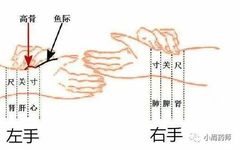Common Pulse Patterns: Fine Pulse (Yin Pulse)
1. Characteristics of the Pulse According to the “Pulse Classic”: “Fine pulse is smaller than minute, often present, but fine.” In “The Correct Eye of Diagnosis”: “Fine, straight, and soft, winding and coiling, resembling fine silk, more evident in minute.” As stated in “Seeking Truth in Pulse Theory”: “Fine pulses come and go like hair, … Read more









